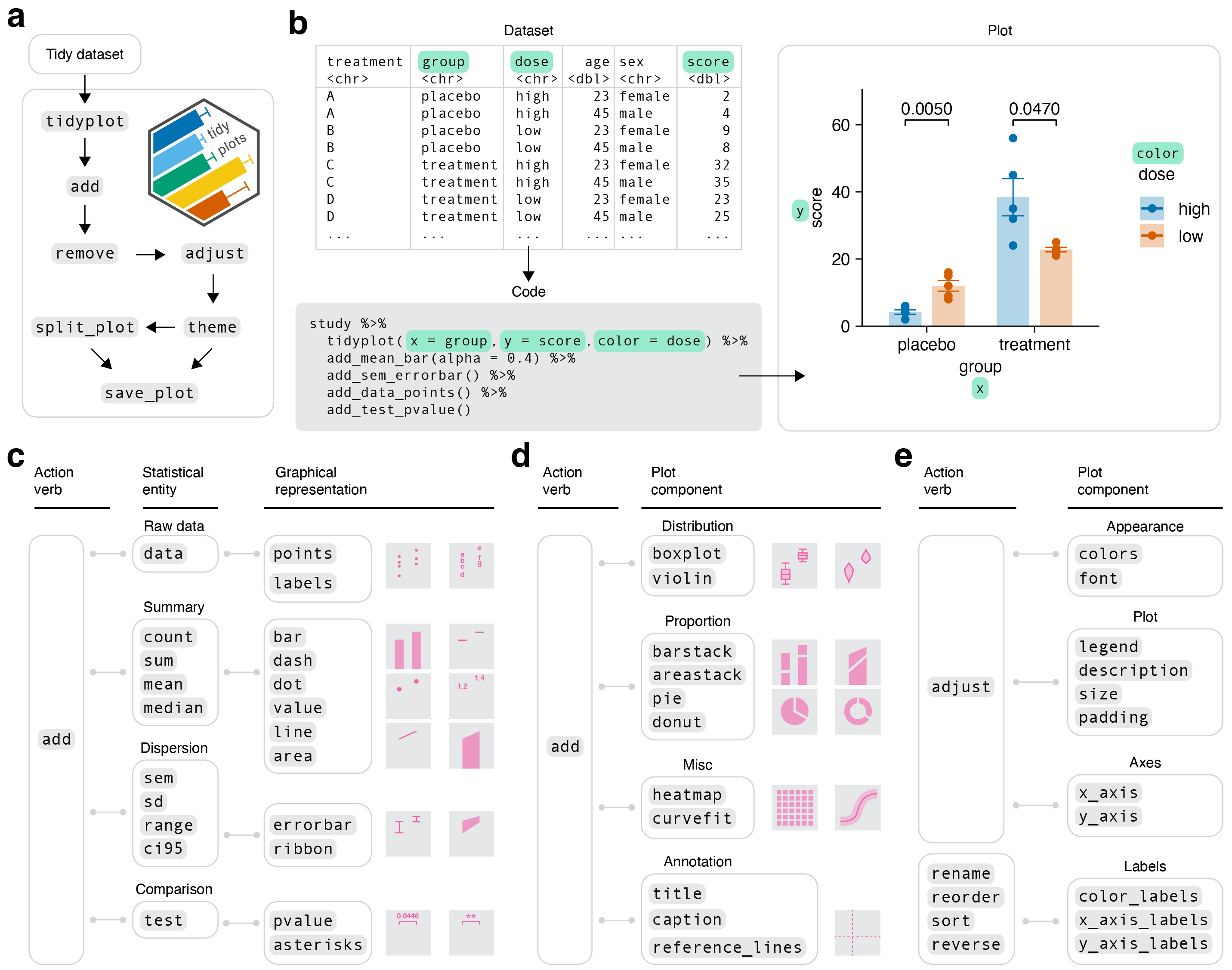ggplot2是基于图层和映射理念,加之管道 (pipe) 语法的助力,能够逻辑清晰地绘制各种图形.然而,ggplot2也有一些明显的缺点:为了保证其绘图逻辑清晰,即使是很简单的图形也需要较多的代码.
事实上,在多数情况下,尤其是在探索性分析阶段,用户们希望简单敲几个命令就能绘制散点图,直方图,密度函数图等基本图形.只有在正式投稿前,才需要美化图形的细节.
tidyplots便是基于这一理念构建的.默认情况下,它绘制的图形已达到多数人的需求,若需美化,只需附加 add(), remove(), adjust() 三类函数即可.简言之,它的绘图逻辑是:\(基本图形 +「加/减/调」= 新图形\). 正因为如此,同样的图形,tidyplots 的代码量只有 ggplot2 的 1/3 或更少.
tidyplots的绘图理念
本质上tidyplots是对ggplot2的二次封装,在封装中对ggplot2的绘图进行了一些默认的美化,它的逻辑分为简单的几个步骤(如 图 1 所示):
通过add(),adjust(),remove()和theme()四类核心函数对图形进行修修补补.
tidyplots也提供了split_plot(),view_plot()和save_plot()等辅助函数对图形进行切割,预览和保存.
tidyplots中所有的函数索引可参看此链接
add()族函数
add_*()函数用于向图中增加不同的图形元素,其作用类似于geom_***()函数.利用add_*()函数可以轻松的增加数据点,统计图,均值线,误差条等图形元素.
- 可以看到图形中的x轴还存在严重的重叠现象,我们可以使用
adjust_*()函数进行调整.
-
tidyplots默认的图形较小,我们可以通过在tidyplot()函数中将width和height两项参数定义为NA,将出图的大小变为ggplot2的默认大小.
adjust_*()族函数
adjust_*()函数用于调整图表元素的外观和样式,例如修改颜色,标题,字体,大小等.这些函数有助于细化图表的样式,使其符合特定的设计需求.
remove_*()族函数
adjust_*()函数用于移除图标中不需要的部分,例如图例,坐标轴,标题等.这些操作有助于简化图表或突出显示某些部分,使其符合图形的需求.
tidyplots和ggplot2连用
我们可以再tidyplots代码的基础上添加ggplot2代码,以实现细节的调整.






